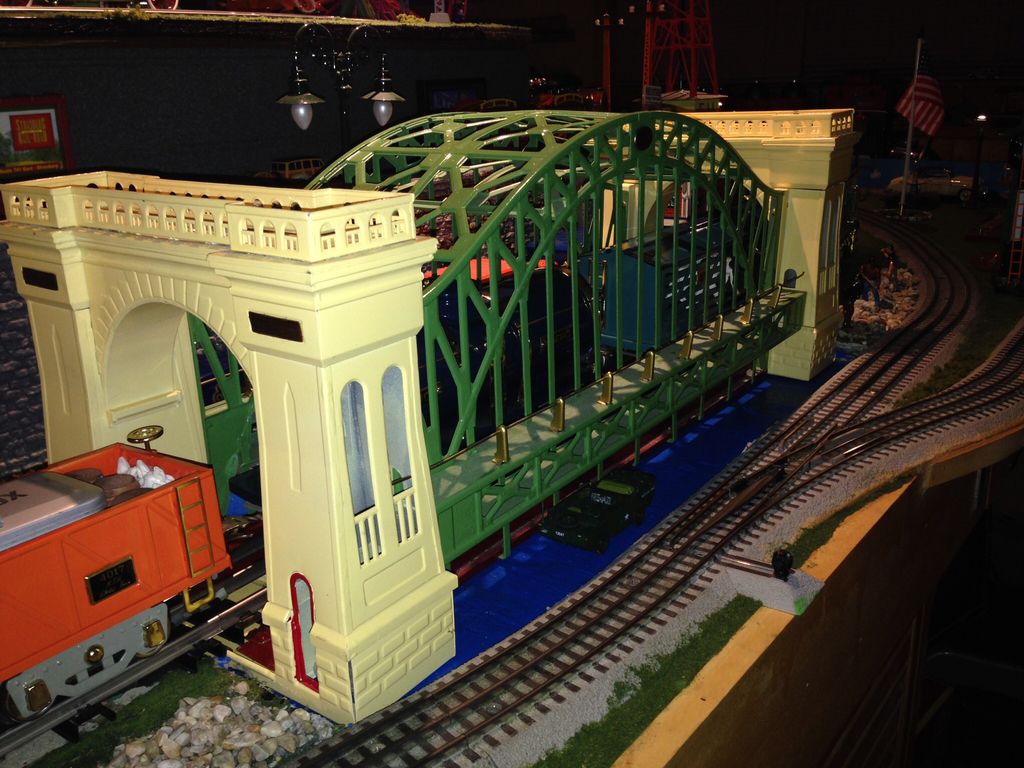The question of repainting or otherwise modifying tinplate trains is something of a delicate subject; people on both sides of the issue can feel passionately about it. I have respect for opinions on both sides. There are certainly times when repainting older tinplate is justified, and then there are times when it is very inappropriate.
I have the same respect for McCoy trains as I have for Ives or other vintage brands. I find the variety of designs and graphics of McCoy trains to be very appealing and I am an avid collector. It was the McCoy brand and the McCoy story that originally got me into collecting Standard Gauge trains. I love them.
In addition, some of us are also tinkerers by nature and cannot help but see further possibilities, be it with Ives, Lionel, or McCoy. There is no disrespect meant by any reconstruction or tinkering; in fact, quite the opposite, it is a testimony to the enduring quality and attractiveness of the designs that inspire our own contributions. Those of you who have followed my posts know that I have modified and re-built Ives, Lionel, and American Flyer trains as well.
Standard Gauge tinplate can be discouragingly expensive, and this includes the best examples of McCoy tinplate. However, there is a particularly unique situation with a certain subset of McCoy trains. In addition to the standard production cars that carry a variety of railroad heralds, McCoy also made a great many cars specifically as commemoratives of train club conventions. These meant something at the time to those who attended the conference and brought home the train car as a souvenir. But there were a great many of these produced, and over time they have lost much of their appeal, even to serious collectors. As a result, they can be found at train shows and auction venues at prices that sometimes approach give-away. These cars offer a low-price alternative entry into Standard Gauge trains.
There are precedents for redecorating these cars. For example, the TCA over-bought 1977 Houston Convention tank cars from McCoy, and were left with many they could not sell. The TCA had Newbraugh Brothers Toys repaint these in different road names to sell; thus creating 4 different very attractive McCoy tank cars that McCoy never made, but which most McCoy collectors nevertheless try to obtain, and at much higher prices than the original convention version – and with full knowledge that they are not "original".
With the most sincere respect to the McCoy heritage and to McCoy collectors everywhere, I do believe that this situation opens the door to those tinkerers among us who enjoy McCoy so much that we would like to explore the possibilities further in our own way. And who knows, perhaps in the process some of these thousands of McCoy convention cars, for which there is almost no interest, might be reborn in the manner of the Newbraugh cars and become attractive ambassadors for the McCoy mystique. If others are not so inclined, then to each his own, and as with those who do or do not favor refinishing vintage Ives or Lionel trains, each can appreciate that the other is involved in the hobby in his own way.
For those who may be concerned that repainted or modified McCoy trains might at some time in the future be confused with original McCoys: I feel that, in principle, there is some validity to that concern. We need to be responsible to be sure these are identified as later modifications:
- all the McCoy which I change in any way has a label affixed to it reading "New creations from vintage McCoy tinplate", with the date. Yes, this is a paper label and could be removed, but it is hard to fault this: it is the same standard that the TCA requires, and believes is adequate, for restoration of any vintage trains.
- the McCoy cars are stripped and repainted, using hardware-store rattle-can paint, which results in a paint finish very unlike the original McCoy.
- The heralds and other decorations are applied as water-slide decals, which is very different from McCoy's silkscreening process.
- In refinishing the cars, the trucks and couplers need to be removed from the body of the car. This means cutting McCoy's solid steel rivets. I re-attach the trucks and couplers using small machine screws and nuts; a sure sign that the car is not factory original.
- Further, I am documenting them here with photos. Assuming OGR will be around for a while, this is full disclosure on a public-access site that should be available well into the future.
With all these factors taken together, in addition to the obvious alterations made in the tinwork, it seems reasonable to expect that these modified trains would not be mistaken for original McCoy production. Any collector, of any trains, from any era, needs to look carefully to determine if any given train has been repainted or restored; this is just as true for collectors of McCoy.
In this spirit, I would like to use future posts in this thread to share some photos and video of my explorations into "McCoy Trains That McCoy Never Made".
And if you have re-worked any McCoy trains yourself, I hope you share them with us here as well.
Let's keep the discussion friendly and enjoyable. They're just toy trains.
Thanks.
david























